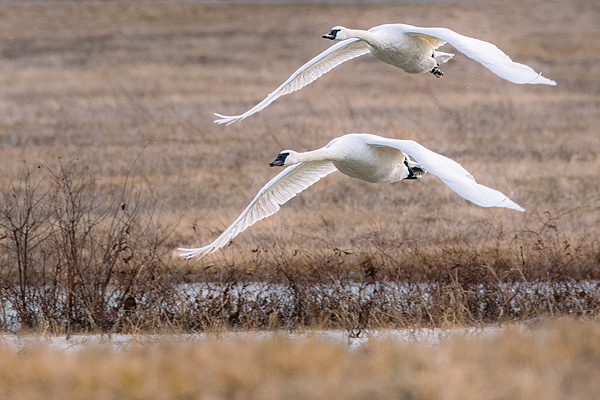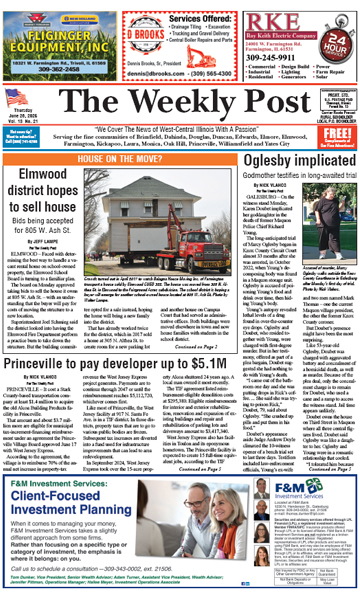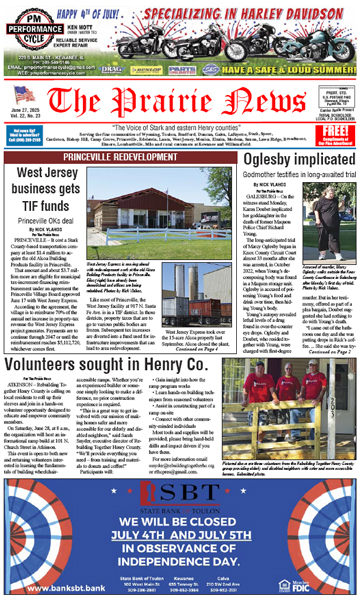
By JEFF LAMPE
For The Weekly Post
“What are the big white birds I’ve been seeing?”
That question, asked increasingly over the past few years, has a simple and encouraging answer: Trumpeter swans.
Thanks to protections from hunting and active breeding programs in several states, trumpeter swans are recolonizing areas of the Midwest – including Illinois – where they were eliminated from by 1900.
In addition to numerous reports of breeding swans in Illinois, the large birds are increasingly over-wintering in central Illinois. In the past few years, flocks have spent time resting in fields throughout The Weekly Post circulation area.
For the past month, several hundred of the big birds – the largest native waterfowl in the U.S., weighing up to 25 pounds – have been lingering west of Douglas and in various strip mines.
Migration through Illinois typically lasts from mid-October through mid-April. And while trumpeter swans typically prefer open habitat near shallow bodies of water, they are well-adapted to resting in strip mines and foraging through ag fields, where they will sit for days on end.
Seeing them overhead in flight is more impressive, as the birds have a wingspan of up to 10 feet. What’s more, because they are an endangered species and protected from hunters, they often fly lower than geese and ducks. And their loud trumpeting in flight overhead is also unique.
Adults are white with black, wedge-shaped bills and black legs. Juveniles are gray with white highlights and have a pink center to their bills.
They are not to be confused with mute swans, the aggressive, imported species with orange bills that are often seen in ornamental ponds.







